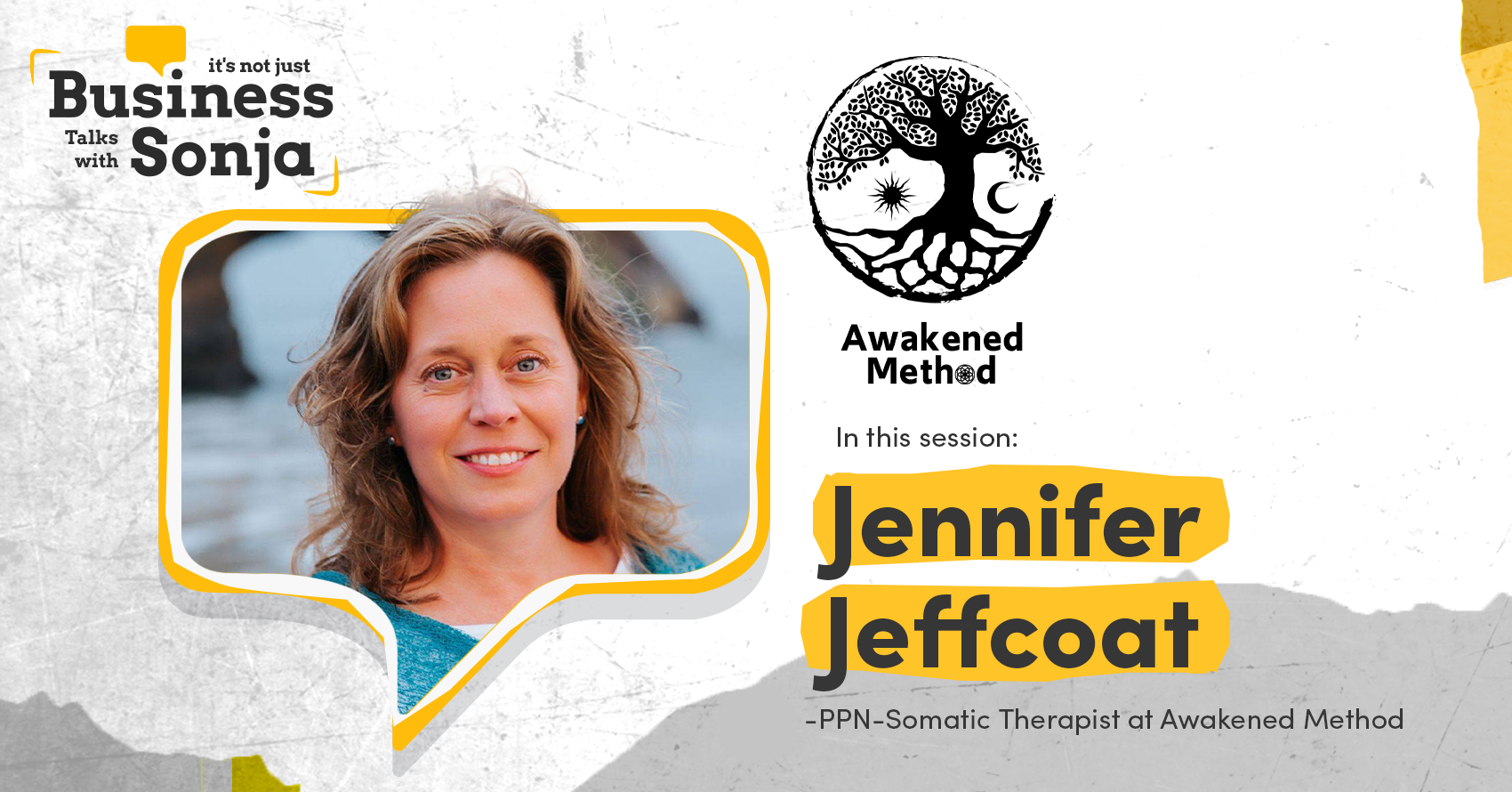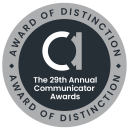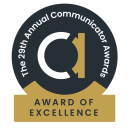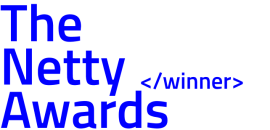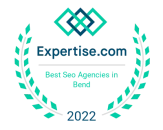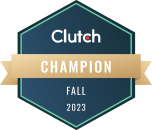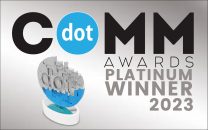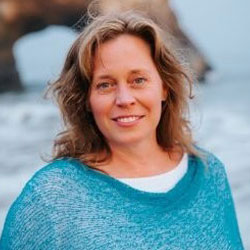
Jennifer Jeffcoat is a PPN-Somatic Therapist holding space from preconception to family dynamics. Her works are interwoven with pre and perinatal birth psychology, attachment theory, polyvagal theory, somatic and spiritual psychology, neurosensorimotor reflex integration, cranial sacral therapy, mindfulness, and conscious studies.
Jennifer has been serving individuals and families for over 28 years. In the last 10 years, she has embodied her works as a doula and midwife assistant, attending over 400 births. Her work opens to professional training as Awakened Somatic Therapist, Parent Educator, and Pre and Perinatal Practitioner.
Here’s a glimpse of what you’ll learn:
- Jennifer Jeffcoat describes her work as a Somatic Therapist
- Using the right resource to invite healing
- How do trauma, stress, and anxiety impact the body?
- Jennifer shares how she was introduced to the world of somatic healing and later became a doula
- Bridging the gap between the technocratic and pre and perinatal psychology communities
- Do more people need therapy today, or is it just more common and less stigmatized?
- Jennifer defines double binds
- How can you repattern core beliefs?
In this episode…
Everyone experiences stress and anxiety from time to time. What happens when we ignore our feelings and let them build up over time?
Our experiences affect more than just our emotions and mind — they also affect the rest of the body. We all have body stories. When you dig deep into those life stories and how you store them in your body, you’ll see that they can bring health, pleasure, joy, and wellness. You’ll also notice that some can cause dysregulation and fragmentation and feelings of sadness and isolation, sometimes manifesting into disease. How can you find healing from previous traumatic experiences?
In this episode of It’s Not Just Business Talks with Sonja, Sonja Anderson sits down with Jennifer Jeffcoat, a PPN-Somatic Therapist, to discuss how to find healing in your body. Jennifer shares how she was introduced to pre and perinatal psychology, how she helps patients find the right resources for healing, and how to repattern core beliefs.
Resources mentioned in this episode:
Sponsor for this episode…
This episode is brought to you by zo agency, a tight-knit team of online and offline marketing pros.
At zo, we serve as the marketing department for small to mid-sized businesses.
We know that marketing and advertising can be demanding and time-consuming — that’s why we make the process so easy-breezy that you don’t have to sacrifice precious time to get the results you need.
To learn more, visit zo.agency or call (541) 633 4725.
Episode Transcript
Intro 0:04
Welcome to It’s Not Just Business Talks with Sonja, where we get down to the real business of How Great Leaders dug through their own trenches and climbed some epic mountains to get where they are today. Now let’s get started with the show.
Sonja Anderson 0:21
I’m here today with Jennifer Jeffcoat somatic therapist holding space from preconception through family dynamics. Her work is interwoven with pre and Perinatal birth psychology, attachment theory polyvagal theory, am I saying that right? Automatic and spiritual psychology, neuro sensorimotor reflex integration didn’t say that that well, cranial sacral therapy, mindfulness and conscious studies Wow, Jennifer. She has been holding space for individuals and families for over 28 years, with the last 10 years embodying. Her work as a doula and midwife assistant attending over 400 births. How beautiful how a culture birth holds supports, during postpartum apart, I can say this again how a culture birth holds support during postpartum and early childhood reflects the physical, emotional, social and mental space of the people. Her work opens to professional training as awakened somatic therapist, parent educator, and pre and Perinatal practitioner. Yes, yeah, nailed it. Did I get it? Oh, yay. Wow, Jennifer, that’s just a incredibly long rap sheet of incredible work. Wow. Um, so can we just start by me asking you what does that look like? What does your day look like? What do you do in practical terms?
Jennifer Jeffcoat 1:52
So in practical terms, I guess we’ll go to what is a somatic therapist? Hmm, so Soma is the body. Mm hmm. I think we all have bodies. And we all have body stories. And so I go deep into how our stories, our life stories, how we store them in our body, and how we either it brings health and pleasure and joy and wellness. But also looking into those parts that we hold that really cause a lot of dysregulation and fragmentation and bring about sadness, feeling isolated, lonely, no part of and how it holds and how it can manifest into disease.
Sonja Anderson 2:43
Events, I ask, you know, if I can just go ahead and play the person, I mean, I’ll just have a little bit of familiarity with your work, but I’ll just go ahead and act like the complete novice for the sake of getting as much information out of you as possible. How, how does the body Hold these?
Jennifer Jeffcoat 2:58
So I Yeah, so always, I have to get, I guess, kind of give an example. Sure if that’s the best way. And with that is if you think about day, you walked out onto a baseball field, walk out onto the baseball field, you’re having fun, you’re enjoying yourself, and boom, a ball comes in the gym ahead. Oh, there’s the you’ve gotten hit the head. So now you have the actual contact space. And then you have the whole motor response that took place when that ball came and hit you. And so the next time you walk on the field, what’s going to happen in a motor response? When you see a ball coming?
Sonja Anderson 3:42
I would say I’d probably freeze like it’s going to hit me. Right?
Jennifer Jeffcoat 3:45
And you would actually probably play out the same kind of movements that you did the first time it hit you. Really? Yes. So again, so is going back to in that moment that we experienced joy, our trauma, we have everything that comes in with that experience for a biochemical response. The way our body, our hands move, our organs, every everything has a memory. So when those stressors and there’s a perceived life threat, again, we will have that biochemical response mode, motor response, everything will play out again,
Sonja Anderson 4:29
despite the fact that the same circumstances are not prevalent. Exactly. Which makes sense. I mean, certainly in the case of trauma and stress, that is either chronic or or severe or, you know, complex. I think that it makes it it probably served a purpose at the time, but it no longer serves a purpose.
Jennifer Jeffcoat 4:53
Right. Right.
Sonja Anderson 4:55
And so how do you work with that? I’m very curious.
Jennifer Jeffcoat 4:58
Okay. So How do I work with that? So my specialty is I move in the field of pre and Perinatal birth psychology, which is we have memory from the time we were conceived, throughout pregnancy, through the birth process, through, you know, all the way through to, we really started talking till that point, we have what we call implicit memory. Right. So even though we don’t remember, we do, or we, our body definitely remembers, and, and so for me, is, you know, when I’m working with clients is really kind of meeting them where they are, and then moving down this storyline all the way to seeing how far we back how far back we can go and where that memory actually started. Where that trauma where this behavioral pattern started to form, and then work in unwinding it and starting to release the shock from the trauma, because the trauma is the event. Right? All that that biochemistry that was going on motor response, then is held in shock patterns. And so is the actual shock that we that moves when we react.
Sonja Anderson 6:17
Got it so and is that process? When you say so you’re a somatic, again, just playing complete novice here, because I have some familiarity with some of these things. But is do you do work? On the body? Or, for example, I’m familiar with EMDR? Or Reiki or other similar do what how do you work with your patients? Or clients? Yeah.
Jennifer Jeffcoat 6:43
Yeah, so it’s multifaceted. You know, I can say, sometimes we’re on the floor, actually rebirthing, sometimes we’re doing a to chair process with a different form of EMDR, the tapping. And then sometimes we are on the table with just holding space for the the nervous system to unwind, really on its own because it can’t. So we tap in that way. So within a session, it can look each time very different. Sometimes you’re doing two or three things. So it is is really just knowing your clients so well. And really being able to know what resource needs to be used in the moment. That’s where the most profound healing takes place. So Well.
Sonja Anderson 7:34
I mean, what since you’re you do you do work with such, you know, really the entire story timeline of a human right, but actually, you know, from conception, so the whole, you know, and I know that you have, if I might, am I correct? You’ve also helped people through passing. Yeah. So from conception to or to birth to throughout their lives into passing? What a great what a magical experience that would be. Do you find people who come to you fall within a certain, because I want to get to the fact that you also teach how to do this, but but that come to you usually, because I’m making this up? They come to you in crisis? Or they’re like, Wow, Something’s just not working, right? Or I’m having a lot of anxiety or whatever. And that’s the entry point, or how do you find most people present to you?
Jennifer Jeffcoat 8:25
I fell most people, most people are referral base because people try to explain what I do. Yeah. It’s always like, huh, so it’s a lot of referral base, because again, people move through it, they start to see they start to feel things just began to unfold for them. And that way of moving how they you know, that that knowing that it’s not, it doesn’t feel right, something is impeding my ability to be more free moving in the world and in relationships, that is more referral based, but those who come to me just kind of out of the blue when I when someone calls is always the somatic really stumps them, it really kind of they take these deep pauses because it is out of a, you know, out of traditional therapeutic realm. And so, you know, a lot of the times people just have to come experience
Sonja Anderson 9:25
100% I would agree, and I know somebody that works with you. And I would say I would second that, you know, and I’ve had some very wonderful practitioners in my life, where they’ve said, you just need to go experience that and it’s kind of, I want to say, as a compliment, that at first you go, this is a little woowoo I don’t understand what’s going to be happening here. And here’s what happens is it the most healing experience you can have and going to the doctor and getting prescriptions to sort of suffocate or suppress You know, the anxiety or the pain or whatever people are experiencing is not as once you experience healing on that level, it’s just a completely different. And then you can you can’t say anything except for you just need to go see her. So do you do that? Could you have to be in person? How did the telehealth world happened during COVID? Do you have to do it in person.
Jennifer Jeffcoat 10:21
exploration, it is still an exploration. Because just as much as I am in the hands on somatic, I’m so much about really teaching an education as well, really understanding the storyline and you know, once you can really start to understand it, and where it is in your body and how is held, there’s so much resourcing that you can do by simply us meeting online. And you know, so I, even myself, I’m still exploring how much can be done online, how much needs to be done in person. And I think, again, it goes back to the individual, this is not a one, one size fits all, by any means. Because we’re all have our own ways of moving and processing. So I say on the most part, I do have clients, you know, like in New York that I see just online, because I’m not going there. You know, I have some people because I have a practice here in the Portland area. I have one in Santa Cruz and will be now going down to San Diego. So
Sonja Anderson 11:24
Oh, nice. Yeah, it was exciting. to Seattle to please.
Jennifer Jeffcoat 11:29
I would love to be an Idaho, I have already started going to Idaho. Excellent. So we’re, you know, again, it’s kind of moving through that space. But I would say on the norm for my home prot you know, for my home based practice. I see my clients online once and then I see him in person once. That is pretty the flow and rhythm that I move. And if not, I see him, i se typically clients twice a month.
Sonja Anderson 11:54
How did you get them? So was that the entry point for you in this type of work? Or did you start with I you know, the Curie Where did you you know, a doula, you know, birthing, you know, where did you Where did you enter into this kind of field of work?
Jennifer Jeffcoat 12:11
I think it was my birth, you know, I was born and it started, I was born and always had these questions of something’s not right, even as a little kid, just, and I love, I just love human, the body, I was a dancer, you know, I actually am still a dancer, but in the somatic world, not, you know, traditional to any type of traditional dance, but just loving the body, loving the outdoors. And just, I guess I was a people watcher, and a big observer, and the shoe and the just nature of humans, I was so intriguing to me. And so you know, as I grew and went into, I was a started off in kinesiology, again, anything to do with the body. So can you see ology was my starting point. And then which led into getting into the fitness realm. And then, you know, wanting to teach and moving into becoming a Waldorf teacher. And altar of teacher was like this, ah, it was like, the light bulb went off. And I’m like, That’s it, that, you know, just really moving into more of that deeper realm of the human spirit. And that was my first introduction into Steiners work into how the womb space is held, and how it moves with us outwardly. And it just has gone on from there. And they think I have hit every you know, I’ve taught high school that I went to middle school, elementary school, and then down to preschool. And, and then, when ever I don’t know, I, you know, I decided to for a while to kind of take a pause and move into the birth realm. Because I really wanted to get into the pre and Perinatal birth psychology and I’m such a kinesthetic learner. I just said, you know, I need to go be a midwife or a doula. So I can be hands on in the book, you need to really be able to speak on it. And so I did it for 10 years. And now I’m close, you know, kind of I’ve had my experience and I can speak on it and and out, up and down. And and now the way I hold space for my clients, because I do understand the experiences in hospitals and home birth and just the energetics. How this trauma moves with us and how it shapes our culture is so profound.
Sonja Anderson 14:40
And yeah, shaping the culture. I mean, that’s just how we don’t realize how one person carrying that story. And myself included everyone. Every if you go into your day and you’re you subconsciously carrying some anxiety about something that’s coming up or you It’s an it’s very unconscious, most of the time unless you’re really checking in and paying attention. That set of thoughts and anxiety and what you’re holding in your body is impacting how you’re working with the postman and the baker and the you know, and then that impacts them or pushes them. I mean, it’s just sort of this commute, a communal wave, really, one person carrying one little, you know, so it’s, it’s really, truly fascinating.
Jennifer Jeffcoat 15:31
Yeah, it is. And, you know, now moving in, you know, diving really deep into my PhD work and excited, you know, for my thesis work is just, you know, I, I am so grateful that I get to be in this place, because with really these deep understandings and you know, pre and Perinatal first psychology has been around for quite some time. I mean, it’s, it’s truly been around since since man, you know, we look at a lot of the tribal communities, they understand it intuitively, to where again, we have moved out of the body, and we’re in the thinking behind that for everything. But pre and Perinatal has been around for a good, you know, 50, you know, 40 years. And, but still, there’s so much in the background, we always had this conversation is start so much have adverse effects with children, and maybe one two, but the, you know, the focus is like, there’s like this disconnect, when the storyline. And so you know, my intention is to really, and there’s so many beautiful colleagues that are out there, you know, really speaking in this field and do therapy in this field, but I feel it’s one within the technocratic community that can really bridge a gap with especially the pre and Perinatal mental health community.
Sonja Anderson 16:55
What did you say technocratic?
Jennifer Jeffcoat 16:57
So technocratic, so technocratic is, is pretty much the way we move when it comes to how we see our bodies. And technocratic is just you know, we’re machine like, we’re parts of we’re
Sonja Anderson 17:13
word for a little old me I leave. Why don’t you?
Jennifer Jeffcoat 17:17
So yes, techno technocratic because there’s three, there’s three layers. There’s technocratic humanism, and then whole ism. And so you know, I think most of us move in the technocratic humanism feel, you know, realm. But to truly be in that whole ism, that true whole ism of what that interconnected that we’re energies, energy interchanging with other energetic fields, as truly whole ism. And so. So yeah, my goal is to really be that gap between the three of them, you know, between education between healing, because we do we have the mental or mental health crises. So it’s hard to even speak on at this point in time. And, you know, human beings,
Sonja Anderson 18:11
you think I mean, this is a genuine question, Jennifer, because, I mean, I grew up in, in Europe, and in Europe, when I was a child, that it was frowned upon to get therapy, it was kind of like yuppie American thing that people did. You just don’t talk if you have a problem, you know, go to the bar drinking away. And so, I came to America, and, you know, people were, I mean, even even 40 years ago, even 35 years ago, for someone to go see a therapist, there was something pretty wrong with them. Yeah, in my in my that’s, that was my understanding, like they were really hurting, you know, they’d lost a family member or something. They didn’t go because they were having anxiety or to do you think that health crises have gotten worse? Or we’re paying more attention to it? Or some combination of that?
Jennifer Jeffcoat 19:00
Yeah, there’s no, there’s never just one way, right. There’s always multiple layers to that conversation. I feel there’s a little bit of both. I do feel that more people are coming out the stigma of, you know, going into therapy is the bat belief is starting to peel away. Right. But we have to look at it from you know, again, multiple layers. If we look at it from a mental health perspective, and in relation to suicide, we can’t say it’s just because more coming out. Because, you know, when suicide rates were here, that therapy, you know, again, there wasn’t as much therapy, but there was still a movement that suicide rates that where we are today.
Sonja Anderson 19:48
So as I write and I haven’t personally paid attention, but there’s a Sharpie involved. And that’s all age groups. That’s teenagers, adults. Yeah, that’s that’s that’s a really fascinating statistic.
Jennifer Jeffcoat 20:01
Yeah, the we have here in the US. We are, we are one of the only countries that have and you know, if you run this is okay. But or if you don’t, that’s okay. But we’re one of the only countries that five year olds are committing suicide.
Sonja Anderson 20:18
Oh my gosh, that’s tragic.
Jennifer Jeffcoat 20:20
I mean, at rates that is, you’ll never you won’t see it on TV, you know. But it’s something has to change. Yeah,
Sonja Anderson 20:28
absolutely. Yeah. And we’ve all, tragically probably been exposed to, or known somebody or have a family to that. So I mean, it’s a, it’s prevalent, it’s not just that one weird thing that that one uncle did, you know, in another? You know, it’s, it’s probably enough that we’re talking about it pretty regularly, actually, yes. How? How did this your own experience working with your practice turn into? Or is this how it happened? Did you start then wanting to teach and help other people grow into the same practice? Or how did that come about?
Jennifer Jeffcoat 21:03
No, absolutely. Again, you know, it’s all my own feeling work, that going through this whole process myself, you know, from all teachers that I’ve been sitting with, for the last, you know, 15 years, you know, starting with, with Steiner Steiners work, wanting to be able to first again, being kinesthetic having to experience it, knowing how to how it works, and truly embodying it myself, now, you know, really ready to share it with others know that they can also either one, you know, see me privately, or do the workshops that we have just coming in to do some self exploration in a group setting. And then now moving into teaching. So those can come and professionally be certified in these areas. And these fields.
Sonja Anderson 21:53
I looked at the a little bit of the outline of you know, your courses that you have, and they’re not, they’re no small potatoes, you don’t come in and learn something over a weekend and get certified. This is several years of really intensive, multi disciplinary, am I correct? Really practice I mean, these people that are coming out of your program, are coming out into the world to do some great work, you know,
Jennifer Jeffcoat 22:18
intention? Yes, it is. It’s so much the work this self exploration, and how they embody it, how they experience and is that, you know, again, to truly bring something out into the world. And what we, you know, the huge component is, how do we hold space for you, for others, without projection without judgment, without, you know, all of that, that fills ourselves just because of how we’ve moved in our society is, takes so much time to unwind and a week and understand that unwinding and understand our own story. With such fluidity. Can we truly not project onto someone else, and allow them to have their own on bias, for the first time, be able to find their potency to find out who they really are? And what are their true beliefs versus the false beliefs, what we call double binds.
Sonja Anderson 23:16
we call double binds and my work with to double bind? Go ahead and explain that that’s
Jennifer Jeffcoat 23:20
Yeah, so it’s awful. So a double bind are false beliefs that we’ve acquired. Because of either, you know, the birth environment, our early childhood cultural society. And so a double bind could look like, if, if I have needs, people abandon me? Mm hmm. And people don’t even realize they have that belief about themselves. And so this is we base our life based off of our double binds our beliefs about ourselves.
Sonja Anderson 23:54
Sure. Yeah. I mean, one of the ones I’ve heard and I’d love to hear your opinion about this is one of my colleagues and I were talking about it is imposter syndrome, I’m going to get caught, they’re going to find out that I’m not really legit. So I’m not really real. I don’t really belong here. And I was laughing because I have I have a little bit of that. And I you know, I don’t know, we haven’t really done anything about it yet. But I have a colleague and I thought that’s so weird. Of course, you belong here. What are you even talking about? But it was so inherent in him? Right? It made no sense to me that he would feel that way. But yet here I am feeling that way, sometimes right about oh, family or whatever, like, someone’s gonna find out. I’m not really a mother. I really don’t have this job. Not very good at it. You know, and so what do you what do you think about that double bind is that it’s a double bind
Jennifer Jeffcoat 24:45
that so yeah, so you have that. So the an imposter, right? There’s a double bind up underneath that. Yeah. Because this is the behavior, you know, the math. And so then there’s a belief of why we feel we’re imposter, like an imposter. So it’s a double bind this that driving force. And then you can get even deeper and okay, what’s underneath that double bind. And then it goes down example is I’m just not good enough. You know, and when we can get all the way down to that core belief, and began to repattern, that belief and to one that is true, then our whole reality begins to shift.
Sonja Anderson 25:30
Back to that, then. So how do you repattern that belief? And again, I know, I’m familiar with EMDR. So is that one of the modalities and is it back, like you said, the two chairs, the hand, those are all parts of the process.
Jennifer Jeffcoat 25:43
It’s all part of the process is just, again, there’s no one way you walk in, it’s how you walk in, it’s kind of where I meet you. And kind of how we move through that event, or whatever you’re moving through, is what it will look like. And I feel that that is the biggest challenge for the community to really wrap their head around, because we’re so used to algorithms and this is the way it’s done, where this work is. So experiencial is for the first time, you being in a place where you are embodied and feel and get to move it and go to the depths that you’ve probably never have gone, and allow it to move forward and speak on it. And so the pace and the rhythm of our sessions are very slow. Because the body has to feel safe. Mm hmm. Before parts of us will start to open.
Sonja Anderson 26:45
And the body is really the most dense of all of the you know, I mean, it’s the slowest, sluggish moving part of all of us, we can change our mind. So very quickly, and for it to materialize in the body, it can take a really long time.
Jennifer Jeffcoat 27:00
Yeah, because we’ll think ourselves out of it.
Sonja Anderson 27:03
Before it changed before. Yeah, before it takes hold.
Jennifer Jeffcoat 27:06
Yeah. So it’s a practice, right? I just say, you know, this work is a practice is a new way of getting up we practice every day, you know, but it’s how do we practice? How does our practice of getting up every day being in this body moving on this world being in relationship? How is it serving us? Is it one best serving us to trust and have pleasure and an empowerment and have this felt sense of unconditional love speak our truth, and really see reality for what it is and be able to manifest and have beautiful secure attachments? Yeah, our do we get up and practice and fear and guilt, and shame? And grief, lies, illusions, and false attachments?
Sonja Anderson 27:55
Well, I mean, I’m just gonna just volunteer, I do all I do, I can do both. Really well, I can go straight for anxiety as my morning tea, or I can go into bliss, I, we’re human, that’s the, and the hardest thing that I have around that is just holding space for that. But other than because I’m kind of an all or nothing and a bit of a perfectionist. And I know, that means that if I if I fall short, by even just a small percentage, I might as well throw the whole thing out. The whole thing is a failure. And so holding space for you know, today, I didn’t do X, you know, and that’s okay. That’s actually a very, so yeah, I can be just
Jennifer Jeffcoat 28:36
about building relationships with those parts of you. Because we do we have light and shadow, and light and shadow is when there’s light and dark is always going to be there. And so is looking at those fear, the guilt, the shame, how do you go one with a functional relationship with each one of those. So when you get up and you have these moments, there is that moment to be able to ground pause, settle, you know, orient, do all these things, and move in a way that’s supportive. Mm hmm. With that, because that fear and guilt and shame, you know, all of those are truly there as a guide. That means we’re in guilt, we’re probably not setting a boundary. Mm hmm. You know, and so that’s all it’s there for but we have it been explained that right now we take fear, guilt, shame. All of that as one as this negative is bad.
Sonja Anderson 29:26
Yeah. As opposed to a clue. It’s a clue.
Jennifer Jeffcoat 29:29
Oh, yeah. It’s just your body’s saying, Oh, my stomach hurts. I just said that. I feel a little guilty about it. Well, why did I say that? Ah, because I didn’t set a boundary. You know, are oh, I didn’t speak my truth. You know, those type things. So again, is just shifting and getting away from the good and the bad, right and wrong, and start to experience your life with these parts of you that are there actually to be a huge guy versus one that is so wrong or bad. Mm hmm.
Sonja Anderson 30:00
Which is to think even those parts that are anxiety producing or sadness producing. Those are uncomfortable feelings, experiences. And yet they’re like, like you just said, like we say, clues right in where where we need to navigate a little bit well, fascinating stuff. And I really appreciate you taking the time to visit. today. I just want to wrap I want to do a quick thing, because your people are gonna want to know how to find you. So, number one place to find you is going to be your website. That is my website. Yes. theawakenedmethod.com Yes, theawakenedmethod.com. And just actually, to shed some clarity on that. Why do you call it the Awakened Method?
Jennifer Jeffcoat 30:49
So Awakened Method is working to awakening to all of who you are, where you’ve been and where you come from? And then
Sonja Anderson 30:58
and you have a method? Yes, I do. So it is a method and there is training. Well, Jennifer, thank you so much. I’ve been with Jennifer Jeffcoat somatic therapist and founder of The Awakened Method. And thank you so much for visiting with us, Jennifer Jeffcoat.
Jennifer Jeffcoat 31:15
Yeah, thank you so much. Yes, appreciate that.
Outro 31:21
Thanks for listening to It’s Not Just Business Talks with Sonja, a real life podcast to inspire you. We’ll see you again next time. And if this is your jam, click Subscribe to get future episodes.

